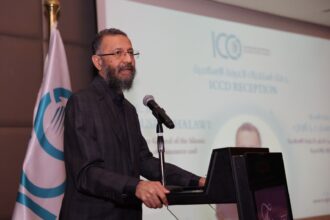In recent years, the pink ribbon has become synonymous with the fight against breast cancer. Simple yet powerful, the ubiquitous symbol represents crucial conversations about women’s health and overall well-being and is a significant vehicle for empowering women to share their stories of hope, strength, and resilience.
The realization that breast cancer is the most common cancer among women globally and that one in eight women will face it in their lifetime is a sobering reminder of the immense impact that this disease has on our lives. The statistics alone paint a stark picture, but they don’t capture the full range of emotions and challenges that accompany a breast cancer diagnosis. It’s a rollercoaster, from the initial shock of the diagnosis to the fear during treatment, recovery, and the uncertainty that lies ahead. Moreover, it touches not only the lives of the individuals facing the diagnosis, but also their families, friends, and communities.
Breast Cancer Awareness Month, held every year in October and symbolized by the famous pink ribbon, has helped raise crucial awareness around the impact of this disease and bring women and men together in the fight against it. Survival rates have been steadily increasing in recent years, with the 5-year relative survival rate for all stages of breast cancer now standing at 91%. When found and treated early, the 5-year survival rate for breast cancer is pushed even higher to 99%. The number of lives being claimed by the disease has also decreased by 43% since 1989, and more than 3.8 million women in the United States alone are living with or beyond the disease.
What this shows us is that progress is being made and that the efforts invested in breast cancer awareness and research are yielding positive results. Advances in early detection, treatment options, and public awareness campaigns are all making a real impact and saving lives. Women are taking control of their health and seeking the care they need, getting regular mammograms and breast exams, and becoming familiar with the signs and symptoms of the disease.
Now we need to keep this going all year round. Breast cancer awareness is not confined to a single month on the calendar; it is a year-round commitment to educate, inform, and inspire. As the global community united in the fight against breast cancer, we should encourage women to know their bodies, understand the risk factors, and embrace regular screenings. Early detection can make all the difference.
Part of this work lies in addressing the healthcare disparities that exist across the world, especially in low-income countries and underserved populations. This requires a multi-faceted approach, including increased funding for healthcare infrastructure, tailored community education programs, and collaboration among governments, NGOs, and healthcare providers. Research and innovation must also focus on affordable, accessible screenings and treatments for resource-constrained settings.
This is precisely why Novartis has established several partnerships with local healthcare organizations and NGOs in underserved communities across the Middle East and Africa, focused on improving access to breast cancer screening, diagnosis, and treatment. Through these collaborations, we aim to strengthen the region’s healthcare infrastructure, provide training for healthcare professionals, and ensure that essential medications and therapies are available to all those in need.
In addition to our on-the-ground efforts, Novartis invests significantly in research and development to create innovative solutions for breast cancer detection and treatment. We are committed to developing more affordable and accessible screening technologies, as well as therapies that are effective and suitable for resource-constrained populations. Our dedication to finding solutions extends beyond the laboratory and into the communities where these innovations can make a real difference.
Tracy Goodridge – Head of Middle East and Africa’s Aspiring Markets at Novartis




